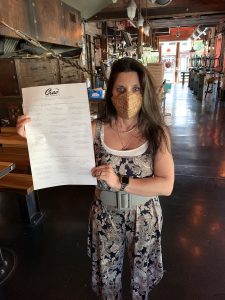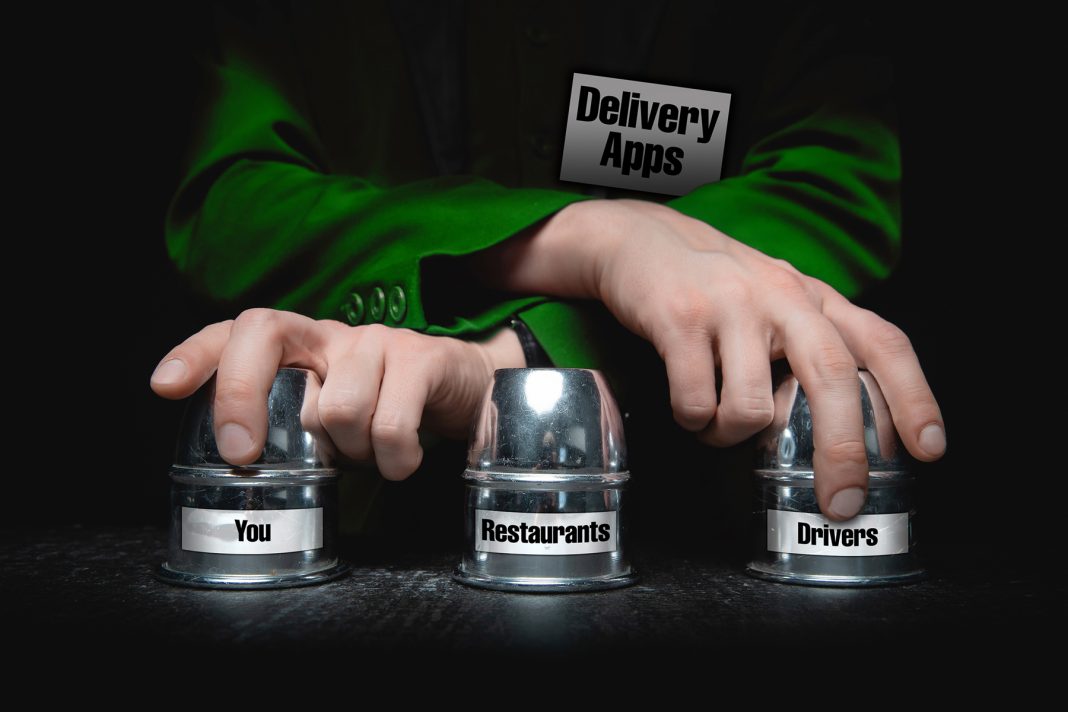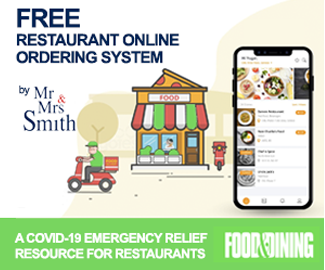Food delivery services were a lifeline for local restaurants after Covid-19 forced them to close their dining rooms, but in the end these services may be worse for business than the disease. Food & Dining Magazine’s Michael L. Jones examines how the pandemic has changed the power dynamics between restaurant owners and the companies who own the food delivery platforms.
After Kentucky Governor Andy Beshear ordered bars and restaurants to close in March due to the Covid-19 outbreak, Bridgette Pizzonia scrambled to set-up curbside pickup at Ciao Ristorante, the Italian restaurant she operates in the Irish Hill neighborhood. Despite the many hurdles, Ciao continued to serve customers.
So, Pizzonia was surprised when some of her regular customers started calling to let her know the online delivery platform GrubHub was listing Ciao as closed.

Not long after Pizzonia opened Ciao in 2016, she told me in an interview, delivery drivers from GrubHub, DoorDash, Postmates, and UberEats began picking up orders from the restaurant. She was told the services had automatically added her restaurant to their platforms once they received a certain number of order requests. She didn’t mind this informal arrangement because it was free to her: the companies simply added a delivery fee, usually about $10, to the customer’s bill when they ordered through the platform.
Although she did not sign a contract with any of the services, Ciao built a brisk business with all of them. She could not imagine why any of them would list her as closed.
What she did not realize was that in 2017 GrubHub had signed a long-term partnership with Yelp, the crowd-sourced social media website that has become one of the nation’s most widely-used sources for restaurant listings and reviews.
In 2018 Yelp integrated GrubHub’s online ordering services into its listings platform in exchange for a 15 to 20 percent referral fee. This is the reason that when someone searches for the phone number of their favorite restaurant on Yelp, they get two numbers. The one listed for general questions is the direct line to the restaurant. But if you want “Delivery or Takeout” it goes a GrubHub controlled phone number. It seems that when customers tried to order delivery from Ciao, they saw the closed listing. After many attempts to reach someone at GrubHub, Pizzonia got a hold of a sales representative who told her she needed to sign a contract to get Ciao in the company’s network. The deal contract, she learned, required exorbitant delivery and marketing fees.
“They wanted 25 to 30 percent of your ticket,” said Pizzonia. “I refused, so they said, ‘You could mark up your prices.’ I don’t agree with that either. I just don’t. They are making this [delivery fee] zero for the customers. But the customers didn’t care about paying $10 for me. I just think it is a shame that once the Covid hit the $10 wasn’t good enough for them anymore,” Pizzonia explained.
The Counter (thecounter.org), a nonprofit online news source that covers the politics and economics of the food industry, reported in June 2019 that GrubHub had purchased more than 23,000 web domain names associated with existing restaurants — which prevented the owners of the restaurants from purchasing their own URLs. In addition, the article found, GrubHub and one of its subsidiaries acting without permission had set up large numbers of shadow websites that linked to existing restaurant websites. Said the article: ”…it appears GrubHub has set up several generic, templated pages that look like real restaurant websites but in fact link only to GrubHub. These pages also display phone numbers that GrubHub controls. The calls are forwarded to the restaurant, but the platform records each one and charges the restaurant a commission fee for every order…”
Those practices precede the Covid-19 pandemic. But since March, restaurant closings and shelter-at-home orders have increased the power that delivery services wield over small, independent restaurants. According to the business data service Second Measure (secondmeasure.com), which analyzes consumer purchasing behavior, twenty-nine percent of American consumers became first-time users of a food delivery service in April. The biggest companies in the business — DoorDash and GrubHub – were the biggest beneficiaries of this explosive increase in deliveries. Second Measure reported, “DoorDash and its subsidiaries earned 45 percent of U.S. consumers’ meal delivery sales in April, while GrubHub and its subsidiaries, which include Seamless and Eat24, took in 23 percent.”
That has led to record sales and record profits for these firms. In the first quarter of 2020, GrubHub reported revenues of $363 million, a 12 percent year-over-year increase from $324 million in the same period in 2019. UberEats’ first-quarter revenue rose by more than 50 percent to $819 million. DoorDash has not gone public but it was valued at $13 billion before the surge in sales. Postmates, which delayed its IPO last year, is valued at $2 billion.
Tomorrow in Part 2: The food delivery business was in flux prior to the outbreak of COVID-19, and here in Louisville, an emerging delivery model fuses national-scale resources with local management and focus. Meet the local entrepreneur who is building a new delivery service based on a different set of values.
Addendum (12 June 2020): Landing on the heels of Food & Dining Magazine’s exclusive three-part series by Michael L. Jones (“We are being conned — the TRUTH about Delivery Apps”) came the news that Just Eat Takeaway brushed Uber aside to buy Grubhub, which was promptly sued by Yum Brands. For further details, go here.




















 Food & Dining Magazine has partnered with the web design firm of
Food & Dining Magazine has partnered with the web design firm of 




